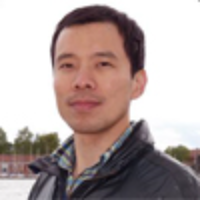Autologous grafts in radiotherapy received breast cancer patients
Published on: 9th February, 2018
OCLC Number/Unique Identifier: 7347013999
German surgeon, Vincenz Czerny, transplanted a patient’s own lipoma located in the hip to it’s breast after gland excision due to mastitis in 1895. Dr. Vincenza reported that for at least a year he didnt observe any problem on the operated breast [1]. Injection of adipose tissue to the breast has been used in breast cancer patients during breast reconstruction and lumpectomy. And in cases of revision autologous tissues are used for reconstruction. In clinical practice, many breast cancer patients apply to the clinics mostly after radiotherapy for reconstruction. Rigotti et al used purified autologous lipoaspirates in breast cancer patients with late term complications of radiation therapy and observed increase in neovascularization and wound healing [2]. Panettiere and colleagues compared aesthetic and functional features of fat grafts in radiotherapy received breast cancer patients and control group. In the fat graft group, all clinical symptoms and aesthetic scores were significantly higher than the control group [3].
In plastic surgery especially after the surgical treatment of breast cancer, prosthetic techniques, various autologous flaps or combinations of both are performed for breast reconstruction. Particularly breast reconstructions following adjuvant radiotherapy have less success rates due to adverse effects of radiotherapy [4-10]. There are reports showing reduced complications rates with use of fat grafts before and after breast reconstruction with prosthesis in patients received radiotherapy after lumpectomy or mastectomy.
With that, in patients receiving radiotherapy after fat grafting, local complications such as fat necrosis, infection can be seen more [3,11]. It was reported that adipocytes may had paracrine and endocrine interactions with tumor cells and stromal elements [12]. The fat grafts used in breast cancer were thought to cause local recurrence, distant metastasis or development of new cancers; there was no relationship in the clinical series. There is aromatase activity in the adipose tissue. Thus, fat tissue is the main source of post-menopausal estrogen hormone. Tumor cells and surrounding tissue were found to be higher in aromatase activity. Therefore, when fat tissue is injected subcutaneous or under the gland rather than into the parenchyma local recurrence risk is low [2].
When fat tissue is injected to breast, a good physical examination and mammography should be performed. After fat injection, sometimes calcifications are formed as a result of undergoing necrosis and they interfere with malignancy. Therefore before and after the procedure, mammography must be taken for comparison and existing and or newly developed calcifications should be determined.




